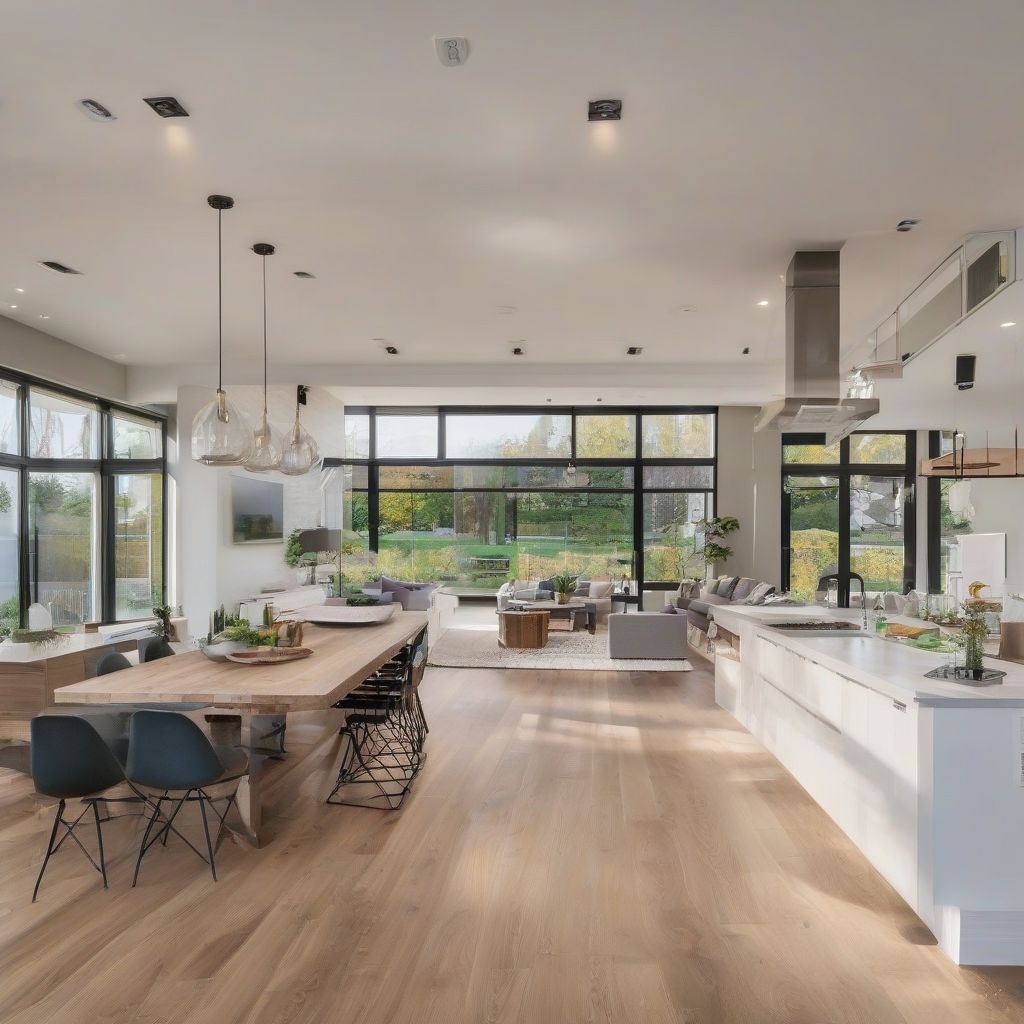Imagine this: you’re hosting a dinner party, the aroma of your culinary masterpiece wafting through the air. Laughter fills the open space as you effortlessly move between the kitchen, dining area, and living room, engaging with your guests. This, my friends, is the allure of an open concept layout – a seamless flow, a sense of spaciousness, and a connection that traditional layouts often lack.
But achieving this harmonious design requires careful planning and a keen eye for detail. As a nutritionist and meal prep coach, I understand the importance of a well-structured plan. Just like a balanced meal, a well-designed open concept space needs the right ingredients to thrive.
This comprehensive guide delves into the world of open concept layouts, offering expert tips and practical advice to help you create a space that is both functional and visually appealing.
Defining Your Open Concept Vision
Before diving into the specifics, let’s first define what constitutes an open concept layout. Traditionally, homes were designed with separate, enclosed rooms, each serving a distinct purpose. Open concept design, however, removes many of these interior walls, merging spaces like the kitchen, dining room, and living room into one cohesive area.
Advantages of Embracing Open Concept
The popularity of open concept living stems from its numerous benefits:
- Enhanced Socialization: Ideal for those who love to entertain, open layouts facilitate interaction and create a welcoming atmosphere for gatherings.
- Abundant Natural Light: By removing walls, natural light flows freely, brightening up the entire space and reducing the need for artificial lighting.
- The Illusion of Spaciousness: Open layouts can make even smaller homes feel larger and more airy.
- Flexibility in Design: This layout allows for versatile furniture arrangement and multifunctional spaces, adapting to your evolving needs.
 Open Concept Living Room and Kitchen
Open Concept Living Room and Kitchen
Key Considerations for Open Concept Layouts
While the benefits are enticing, it’s crucial to be mindful of potential challenges and address them proactively:
- Maintaining a Sense of Cohesion: Without proper planning, open layouts can feel chaotic and disjointed.
- Noise Control: Sound travels freely in open spaces, so consider strategies to minimize noise transfer.
- Privacy Concerns: The lack of walls can impact privacy, particularly in areas like the kitchen.
Expert Tips for a Seamless Design
Here are some proven tips to help you achieve a seamless open concept design:
1. Define Zones with Purpose
While the essence of open concept is interconnectedness, defining distinct zones for different activities is crucial. Use furniture, rugs, or varying floor levels to delineate spaces without sacrificing the open feel.
2. Flooring that Flows
Opt for consistent flooring throughout your open concept space to visually connect the different areas. If you prefer distinct flooring materials, ensure a smooth transition between them.
3. The Power of a Cohesive Color Palette
A cohesive color palette is paramount in unifying your open concept layout. Choose a base color scheme and introduce variations through accent walls, furniture, and decor.
4. Lighting as a Design Tool
Strategic lighting can dramatically enhance your open concept design. Use a combination of ambient, task, and accent lighting to define zones, highlight architectural features, and create ambiance.
5. Furniture for Flow and Function
Select furniture pieces that are appropriately scaled for the space, allowing for easy traffic flow. Consider using furniture to define zones, like a large sectional sofa to separate the living area from the dining space.
6. Embrace Storage Solutions
Open concept living often necessitates creative storage solutions to maintain a clutter-free environment. Incorporate built-in shelves, ottomans with hidden storage, and stylish baskets to keep belongings organized.
Addressing Common Open Concept Challenges
1. Maintaining Privacy
Strategic placement of furniture, such as open shelving units, can create subtle divisions while still maintaining an open feel. Consider incorporating pocket doors or sliding screens for added privacy when needed.
2. Controlling Noise Transfer
Area rugs, upholstered furniture, and textured wall treatments can help absorb sound and minimize noise transfer in open concept spaces.
3. Ventilation Considerations
Ensure adequate ventilation in your open concept kitchen to prevent cooking odors from permeating the entire space. Consider investing in a high-quality range hood with proper ventilation.
The Open Concept Kitchen: A Focal Point
As the heart of the home, the kitchen often takes center stage in open concept designs. Here’s how to create a kitchen that seamlessly integrates with the surrounding spaces:
- Island Inspiration: A kitchen island serves as a natural divider, defining the kitchen area while providing additional seating and workspace.
- Statement Lighting: Pendant lights above the island not only illuminate the space but also add a touch of visual interest.
- Backsplash Brilliance: A stylish backsplash serves as a focal point, adding personality and tying together the kitchen’s design elements.
Open Concept Living for Every Style
Whether your aesthetic leans towards modern minimalism, rustic charm, or industrial chic, open concept living can be adapted to suit any style. The key is to select furniture, decor, and finishes that reflect your personal taste while maintaining a cohesive overall design.
Conclusion
Open concept layouts offer a world of possibilities for creating spaces that are both functional and aesthetically pleasing. By embracing these tips and addressing potential challenges, you can design an open concept home that reflects your personal style and enhances your lifestyle.
Remember, your home should be a reflection of you. Embrace the journey of designing your open concept space, infusing it with your unique personality and creating a sanctuary that truly feels like home.
Now that you’re equipped with the knowledge to create a seamless open concept layout, I’d love to hear your thoughts! What are your biggest design dilemmas when it comes to open concept living? Share your comments below and let’s continue the conversation!
[amazon bestseller=”open concept design”]
